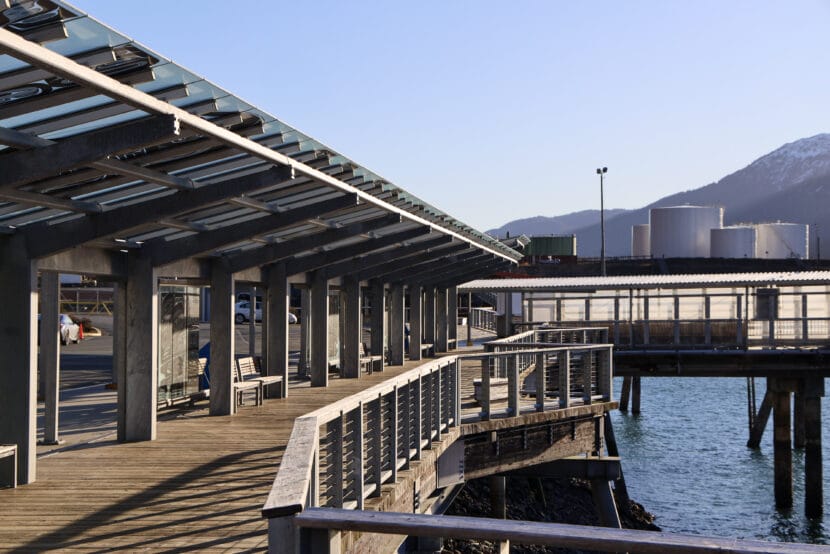
A plan to extend Juneau’s downtown waterfront walking path, also known as the seawalk, crossed a major hurdle earlier this week.
The city has long planned to develop a continuous, mile-and-a-half-long path from the Douglas Bridge to the AJ Dock. That’s the cruise ship dock farthest from downtown. The city has developed the seawalk in sections over the years, and this new section will extend a quarter mile south towards Thane.
Alix Pierce, the city’s visitor industry director, presented on the project in May. She said it will make Juneau more welcoming — and accessible – for tourists.
“We would need to get further along in the design process to have a more accurate estimate, but we can assume it’s a $20 to $25 million project,” she said.
But, the project can’t move forward unless the city can negotiate a land swap deal with the private owners of the Franklin Dock — where the seawalk currently ends.
The city would essentially swap a small piece of city-owned land near the Franklin Dock, called the National Guard Dock, in exchange for a land easement and a tidelands lease. On Monday, the Juneau Assembly voted to let the city manager start those negotiations.
Right now, the AJ dock is isolated from the rest of the ships. Tourists coming off ships there have to shuttle into town or walk roughly 10 minutes through an industrial area to get there. The extension will allow them to walk directly to Juneau along the waterfront. But a lot of residents use the seawalk too — whether that’s walking their dogs or simply sitting on a bench to look out at the channel.
Karla Hart, a longtime activist against the growth of tourism in Juneau, said those locals should have more say in how this project moves forward. She spoke about it at the meeting on Monday.
“There’s no public urgency, and delaying this will not impair existing use and scale of the cruise industry. Rushing it will have unknown consequences,” she said.
She asked the Assembly to table the negotiations to gather more input.
The city already has close to $6 million set aside for the project from marine passenger fees. The Assembly will need to determine how to pay for the rest, but passenger fees will likely pay for most of it.
The Assembly will still need to give the final stamp of approval on the negotiated land swap before anything can move forward. The city will also have to work out a deal for a land easement with Petro Marine, another landowner in the area, and go through a permitting process.